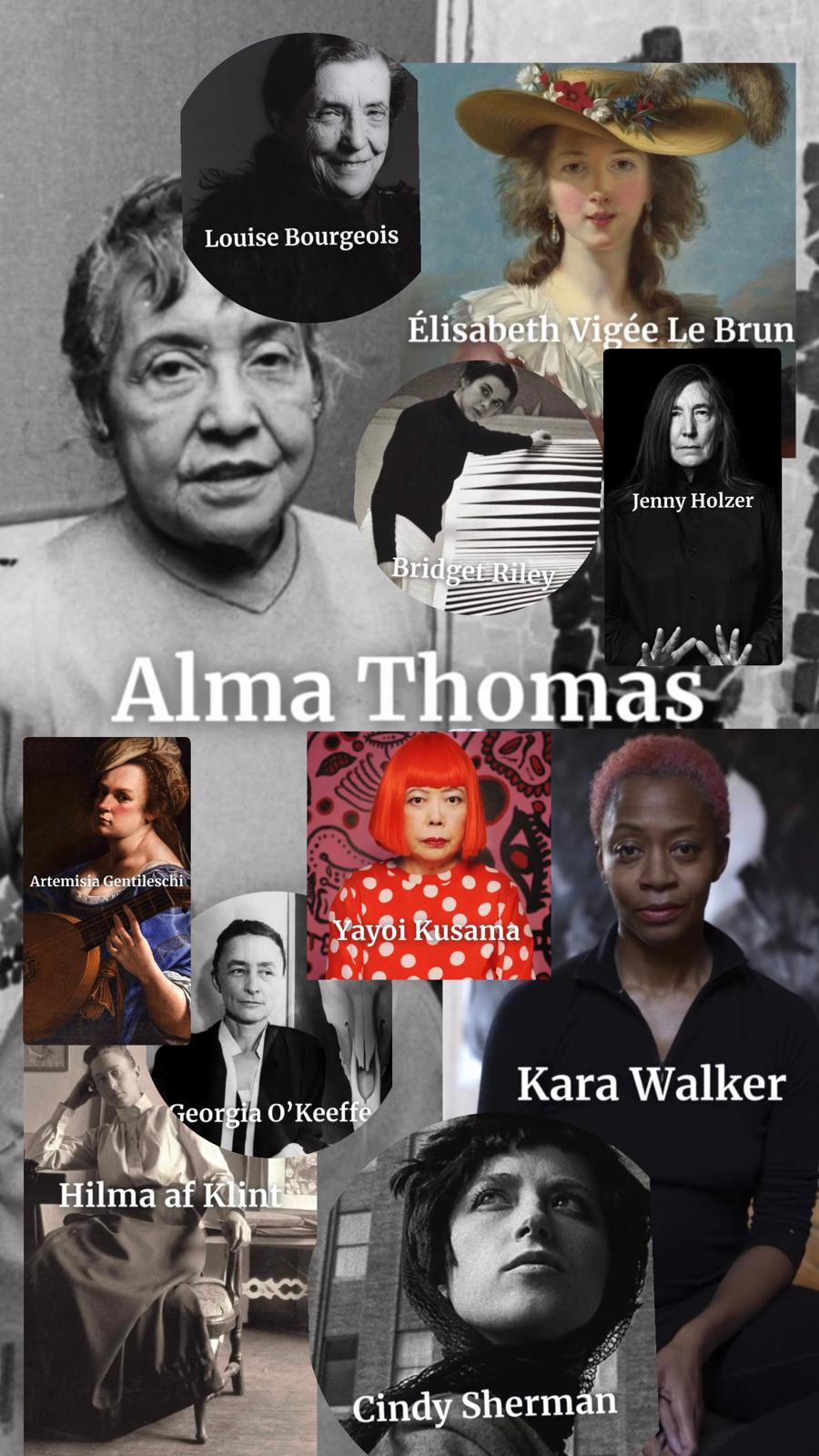Female Artists who changed the ART World
A journey across centuries and gazes, where light, gesture, and matter become secret instruments for changing the way the world learns to see.
TODAY'S HEADLINERARTISTS
Charlotte Madeleine CASTELLI
8/16/20253 min read


What binds a Baroque painter who turned light into an instrument of truth, a surrealist photographer who transformed the negative into a visual wound, a performer who measures the space between two gazes, a painter who makes optical repetition an exercise in vertigo?
Not a manifesto.
Not a shouted act of rebellion.
But a slow, inexorable rewriting of perception.
When I step into their worlds, I do not see a succession of solitary voices. I see a weave that runs through centuries and disciplines, a thread that never breaks and, in different ways, has changed the way we look.
Artemisia Gentileschi stands at the dawn of this thread, not as an emblem of defiance but as a master of chiaroscuro that presses truth into the folds of the human face. Her light is not illumination—it is incision. Élisabeth Vigée Le Brun follows, painting not the power of her sitters but the intimate intervals between their thoughts, the poised tremor of a breath caught on canvas. Mary Cassatt shifts the gaze inward, folding domestic quiet into the geometry of Impressionist color, turning motherhood into an architecture of tenderness. Berthe Morisot lets brushwork scatter like wind-lifted pollen, her figures neither still nor moving, suspended in the soft threshold between perception and memory.
Hilma af Klint, painting in the solitude of secrecy, translates the unseen into spirals and chromatic chords—a music of form that would only be heard decades after it was composed. Frida Kahlo compresses entire geographies of pain and desire into the surface of her skin, each canvas a mirror that refuses to reflect without fracturing. Georgia O’Keeffe distills landscapes into single breaths of pigment, magnifying petals until they dissolve into horizons. Louise Bourgeois threads sculpture with memory, her bronze and cloth forms breathing in the cadence of nightmares that never resolve.
Leonora Carrington builds dream-worlds that feel as if they have always existed, their creatures speaking in the grammar of fog and myth. Lee Krasner reshuffles the language of Abstract Expressionism, splicing gesture with a rhythm that feels almost percussive. Yayoi Kusama multiplies the self until it becomes a field of vision, an infinity where perception trembles and dissolves. Elaine de Kooning merges portraiture with the urgency of motion, as if each figure is mid-flight. Alma Thomas translates gardens into tessellations of light, color flickering like a distant choir. Kara Walker slices silhouettes from history’s darkest fabric, projecting them into the luminous cruelty of shadow. Cindy Sherman dissolves identity into disguise, the self refracted through a thousand untrustworthy mirrors. Peggy Guggenheim does not create images but architectures of possibility, spaces in which these voices could reverberate beyond their own lifetimes. Jenny Holzer sculpts language into light, her phrases searing the air with a cold, electric intimacy.
Dora Maar arrests the surreal before it escapes, her photographs carrying the weight of unspoken collisions between dream and document. Leonor Fini paints desire in a theatre of metamorphosis, her figures neither fully human nor fully myth. Marina Abramović turns presence itself into sculpture, measuring endurance not by hours but by the distance between two unblinking eyes. Faith Ringgold quilts stories into fabric, turning color into a vessel of movement and oral history. Bridget Riley bends vision until the eye itself becomes unstable, her repetitions a vertigo that is almost pleasurable. Shirin Neshat braids calligraphy into skin, her images carrying the scent of ink and exile.
To speak of them is to step into a continuum, where light thickens into memory, where shadow sharpens into voice. I do not approach them as a catalogue of names, but as a single, shifting organism—its pulse echoing across centuries, its language both ancient and yet still being written. They have not merely altered the history of art; they have altered the very way we permit ourselves to see.
© Charlotte Madeleine Castelli | All rights reserved
